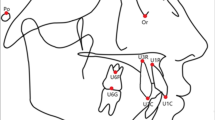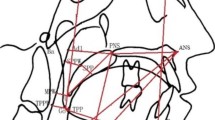Summary
Aim: This was to determine the relative contribution of genetic factors on the morphology of occlusal surfaces of mandibular primary first molars by employing the twin study model. Methods: The occlusal morphology of mandibular primary first molar teeth from dental casts of 9 monozygotic (MZ) twin pairs and 12 dizygotic (DZ) twin pairs 4 to 7 years old, were digitized by contact-type three-dimensional (3D) scanner. To compare the similarity of occlusal morphology between twin sets, each twin pair of occlusal surfaces was superimposed to establish the best fit by using computerized least squared techniques. Heritability was computed using a variance component model, adjusted for age and gender. Results: DZ pairs demonstrated a greater degree of occlusal morphology variance. The total amount of difference in surface overlap was 0.0508 mm (0.0018 (inches) for the MZ (n=18) sample and 0.095 mm (0.0034 inches) for the DZ (n=24) sample and were not statistically significant (p=0.2203). The transformed mean differences were not statistically significantly different (p=0.2203). Heritability estimates of occlusal surface areas for right and left mandibular primary first molars were 97.5% and 98.2% (p<0.0001), respectively. Conclusions: Occlusal morphology of DZ twin pairs was more variable than that of MZ twin pairs. Heritability estimates revealed that genetic factors strongly influence occlusal morphology of mandibular primary first molars.
Similar content being viewed by others
References
Almasy L, Blangero J. Multipoint quantitative-trait linkage analysis in general pedigrees. Am J Hum Genet. 1998;62:1198–1211.
Biggerstaff RH. Heritability of the Carabelli cusp in twins. J Dent Res. 1973;52:40–44.
Boraas JC, Messer LB, Till MJ. A genetic contribution to dental caries, occlusion and morphology as demonstrated by twins reared apart. J Dent Res1988; 67:1150–55.
Cai J, Cho SW, Kim JY, et al. Patterning the size and number of tooth and its cusps. Dev Biol. 2007 Jan 9; [Epub].
Dempsey PJ, Townsend GC. Genetic and environmental contributions to variation in human tooth size. Heredity 2001;86:685–93.
Jernval J, Aberg T, Kettunen P, Keranen S, Thesleff S. The life history of an embryonic signaling center: BMP-4 induces p21 and is associated with apoptosis in the mouse tooth enamel knot. Development. 1998;125:161–69.
Jernvall J, Jung HS. Genotype, phenotype, and developmental biology of molar tooth characters. Am J Phys Anthropol. 2000;31:171–90.
Jernvall J. Mamalian molar cusp patterns: Developmental mechanisms of diversity. Acta Zool Fennica. 1995;198:1–61.
Jernvall, J, Kettunen P, Karavanova I, Martin LB, Thesleff I. Evidence for the role of the enamel knot as a control center in mammalian tooth cusp formation: non-dividing cells express growth stimulating Fgf-4 gene. Int J Dev Biol. 1994; 38:463–469.
Kabban M, Fearne J, Jovanovski V, Zou L. Tooth size and morphology in twins. Int J Paediatr Dent. 2001;11:577–586.
Miletich I, Sharpe PT. Normal and abnormal dental development. Human Mol Genet. 2003;12:R69–73.
Pinkham JR, Casamassimo PS, Fields HW, McTigue DJ, Nowak A. Pediatric Dentistry: Infancy through Adolescence. 3rd ed. Philadelphia, PA: W.B. Saunders; 1999.
Townsend G, Richards L, Hughes T. Molar intercuspal dimensions: genetic input to phenotypic variation. J Dent Res. 2003;82:350–355.
Vaahtokari A, Aberg T, Jernvall J, Keranen S, Thesleff I. The enamel knot as a signaling center in the developing mouse tooth. Mech Dev. 1996; 54:39–43.
Wright JT, Hart TC. The genome projects: implications for dental practice and education. J Dent Educ. 2002;66:659–71.
Zhang Y, Lundgren T, Renvert S et al. Evidence of a founder effect for four cathepsin C gene mutations in Papillon-Lefevre syndrome patients. J Med Genet. 2001;38:96–101.
Author information
Authors and Affiliations
Corresponding author
Rights and permissions
About this article
Cite this article
Su, C.Y., Corby, P.M., Elliot, M.A. et al. Inheritance of Occlusal Topography: A Twin Study. Eur Arch Paediatr Dent 9, 19–24 (2008). https://doi.org/10.1007/BF03321591
Published:
Issue Date:
DOI: https://doi.org/10.1007/BF03321591




